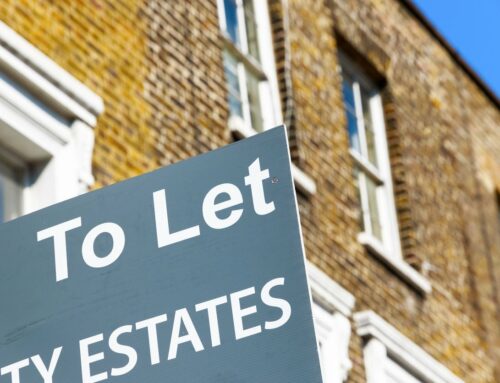Home » Uncategorised »
London tenants seeing ‘more manageable’ rent prices during pandemic
This article is an external press release originally published on the Landlord News website, which has now been migrated to the Just Landlords blog.

London has become a more affordable place to rent during the pandemic, according to research by London lettings and estate agent Benham and Reeves.
Benham and Reeves analysed the rent to income ratio prior to the pandemic and found that across London, 64.4% of the average net monthly earnings was required to cover the average rent.
The agent also analysed how this has changed based on the latest rental data combined with the latest earnings data from the ONS, whose estimates included furloughed employees and were based on actual payments made to these employees from company payrolls and the hours on which this pay was calculated.
The research shows that across London, this ongoing financial support via the furlough scheme and a reduction in the cost of renting means that the average London tenant is now paying just 60.2% of their income to cover the cost of renting.
This trend has been seen across 23 of the capital’s boroughs and in some cases has been far greater. However, areas such as Islington and Haringey have seen rent increases.
| Pre-COVID | Currently | ||||||
| Location | Average Rent (Sep 2019) | Average Net Salary (Oct 2019) | Rent to Income Ratio | Average Rent (Sep 2020) | Average Net Salary (Nov 2020) | Rent to Income Ratio | Change in Rent to Income Ratio |
| London | £1,697 | £2,634 | 64.4% | £1,639 | £2,721 | 60.2% | -4.2% |
| Camden | £2,536 | £3,403 | 74.5% | £2,012 | £3,223 | 62.4% | -12.1% |
| Lewisham | £1,324 | £2,316 | 57.2% | £1,322 | £2,643 | 50.0% | -7.1% |
| Kingston upon Thames | £1,390 | £2,778 | 50.0% | £1,288 | £2,981 | 43.2% | -6.8% |
| Hammersmith and Fulham | £2,117 | £3,215 | 65.9% | £2,016 | £3,288 | 61.3% | -4.5% |
| Barking and Dagenham | £1,194 | £1,805 | 66.2% | £1,206 | £1,951 | 61.8% | -4.3% |
| Harrow | £1,407 | £2,365 | 59.5% | £1,445 | £2,611 | 55.3% | -4.1% |
| Hounslow | £1,432 | £2,260 | 63.4% | £1,416 | £2,370 | 59.8% | -3.6% |
| Ealing | £1,463 | £2,422 | 60.4% | £1,568 | £2,758 | 56.9% | -3.6% |
| Kensington and Chelsea | £3,053 | £5,190 | 58.8% | £2,977 | £5,349 | 55.7% | -3.2% |
| Bromley | £1,321 | £2,779 | 47.5% | £1,318 | £2,966 | 44.4% | -3.1% |
| Hillingdon | £1,270 | £2,097 | 60.6% | £1,244 | £2,162 | 57.5% | -3.0% |
| Hackney | £1,834 | £2,363 | 77.6% | £1,860 | £2,481 | 75.0% | -2.6% |
| Waltham Forest | £1,309 | £2,268 | 57.7% | £1,359 | £2,458 | 55.3% | -2.4% |
| Bexley | £1,106 | £2,360 | 46.9% | £1,113 | £2,498 | 44.6% | -2.3% |
| Redbridge | £1,318 | £2,385 | 55.3% | £1,311 | £2,465 | 53.2% | -2.1% |
| Brent | £1,535 | £2,206 | 69.6% | £1,494 | £2,195 | 68.1% | -1.5% |
| Croydon | £1,136 | £2,262 | 50.2% | £1,155 | £2,363 | 48.9% | -1.3% |
| Merton | £1,530 | £2,787 | 54.9% | £1,639 | £3,060 | 53.6% | -1.3% |
| Barnet | £1,523 | £2,490 | 61.2% | £1,485 | £2,476 | 60.0% | -1.2% |
| Enfield | £1,310 | £2,132 | 61.5% | £1,301 | £2,150 | 60.5% | -1.0% |
| Havering | £1,169 | £2,309 | 50.6% | £1,175 | £2,364 | 49.7% | -0.9% |
| Westminster | £3,018 | £4,043 | 74.6% | £2,822 | £3,803 | 74.2% | -0.4% |
| Newham | £1,424 | £1,999 | 71.2% | £1,476 | £2,083 | 70.9% | -0.4% |
| Southwark | £1,654 | £2,711 | 61.0% | £1,720 | £2,816 | 61.1% | 0.1% |
| Lambeth | £1,754 | £2,561 | 68.5% | £1,961 | £2,838 | 69.1% | 0.6% |
| Richmond upon Thames | £1,857 | £3,749 | 49.5% | £1,940 | £3,869 | 50.1% | 0.6% |
| Tower Hamlets | £1,803 | £3,159 | 57.1% | £1,810 | £3,108 | 58.2% | 1.2% |
| Greenwich | £1,404 | £2,649 | 53.0% | £1,494 | £2,755 | 54.2% | 1.2% |
| Sutton | £1,167 | £2,335 | 50.0% | £1,133 | £2,206 | 51.4% | 1.4% |
| Wandsworth | £1,883 | £3,395 | 55.5% | £1,948 | £3,393 | 57.4% | 1.9% |
| Haringey | £1,558 | £2,339 | 66.6% | £1,644 | £2,292 | 71.7% | 5.1% |
| Islington | £1,914 | £3,193 | 59.9% | £1,908 | £2,906 | 65.7% | 5.7% |
| Data Sources | ONS Private Rental Market Summary | ONS Employee Earnings in the UK | Rent as a percentage of net income | ONS Private Rental Market Summary | ONS Employee Earnings in the UK | Rent as a percentage of net income | Change between rent to income ratios |
Marc von Grundherr, Director of Benham and Reeves, comments: “The pandemic has caused a large degree of financial instability for tenants and landlords alike and so the last two years have been far from smooth sailing for those within the London rental sector.
“However, one silver lining to the ongoing uncertainty caused by Covid does seem to be an increase in rental affordability across much of the capital.
“This has come about due to two driving factors. The first being a drop in demand which has caused many landlords to slash rents in order to secure a tenant and recoup some form of rental income.
“The second has been the ongoing financial support of the furlough scheme which has made the difference between retaining employment and losing it for a great deal of people. As a result, they’ve been able to maintain some form of income, albeit at a lower level, and this has enabled them to cover the cost of renting.
“As it stands, the cost of renting is more manageable now than it was two years ago and so those returning to the capital should be able to secure a decent rate of rent for the duration of their initial tenancy.
“Of course, as we do return to normality, this growing demand is likely to bring rental prices back to their pre-pandemic highs and so any tenants with intentions of snagging a deal should act sooner rather than later.”




